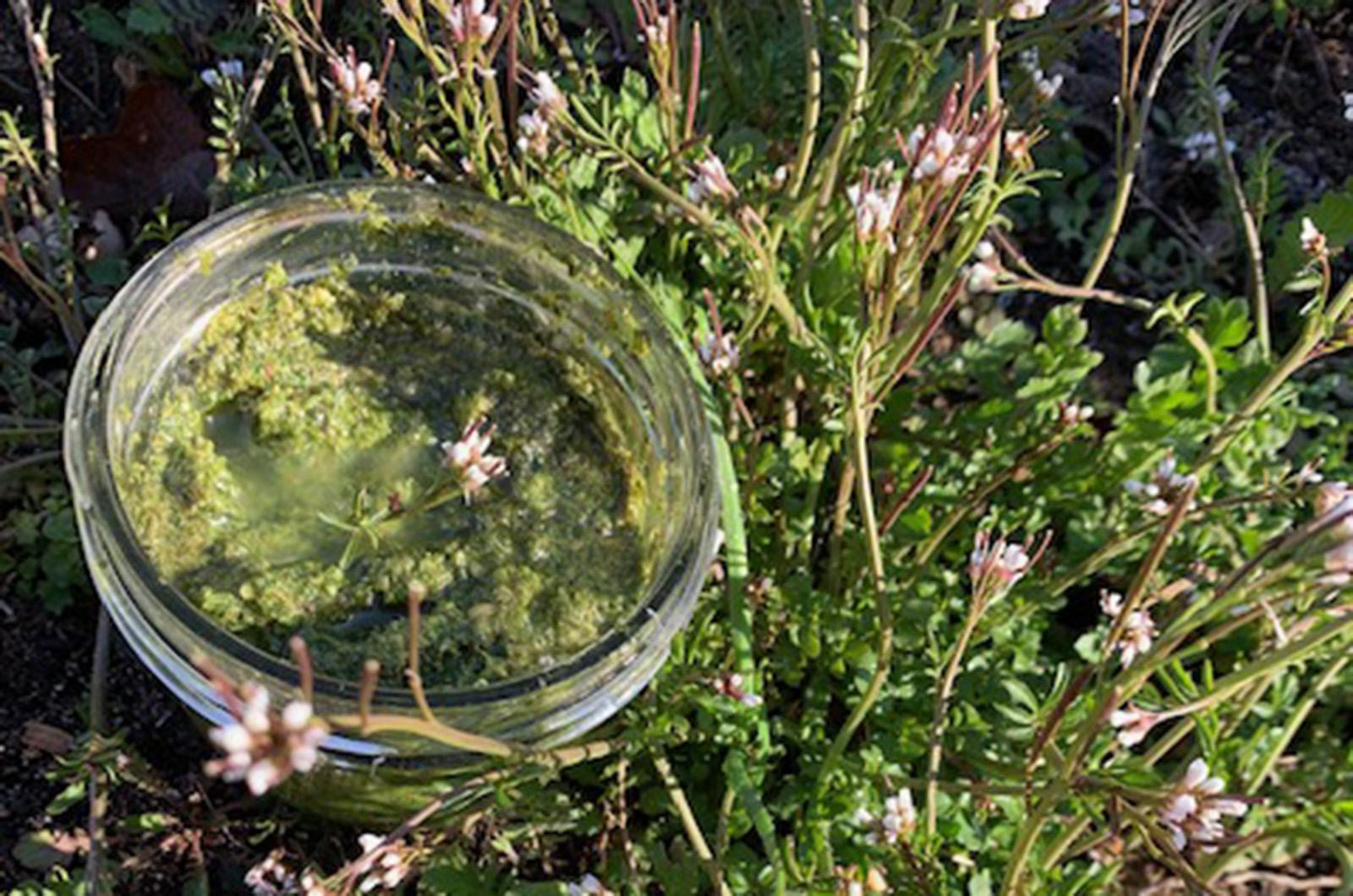You know what to do when life gives you lemons, but what do you do when the garden gives you pests?
Make pest-o.
My garden beds were overrun with greens, though not ones that I had intentionally planted. Over the winter, weeds had won the day and as I was cleaning up for the spring transplants, I noticed that the space invaders were an edible variety. The pest is a floral, not fauna, species and so is suitable for vegetarians.
Hairy bittercress, a member of the mustard family, will tickle your tastebuds if you can get past its unappetizing name. While there are almost imperceptible hairs on the leaves and stem of this plant, you won’t notice or taste them. This petite plant isn’t bitter either, more like the peppery microgreens that are all the rage.
While this species is sometimes called by other names, including lambs’ cress, land cress, hoary bittercress, spring cress, flickweed and shotweed, be sure to do your due diligence: these common names are sometimes used for other plants. Cardamine hirsuta, its scientific name, allows for less confusion.
A transplant from Eurasia, this cress is easy to identify and find. Hairy bittercress likes moist, disturbed soils and will take root in your yard and garden, and along pathways and roadside edges. Making it even easier to identify are the small white flowers that are now blooming.
Starting as early as February, the leaves will emerge in basal rosettes and the plant can be harvested until it begins to seed. The leaves are the best part and can be eaten raw in salads, cooked as potherbs or, my favorite, made into a perfect pesto. Just add garlic, olive oil, salt and the nut of your choice. The flowers shouldn’t stop you as they can also be consumed, though they are bit less tender than the luscious leaves.
And during this season of few fresh greens, hairy bittercress can provide nutrients, including vitamin C, calcium, magnesium, beta carotene and antioxidants.
Whether you eat it or not, it is a good idea to remove it from your green space. After the flowers come seedpods, called siliques. These purplish siliques are super spreaders. Each plant can produce up to 1,000 seeds and the seeds like to soar using an ingenuous and effective scattering strategy, called bollochory.
Bollochory is brilliant, allowing bittercress seeds to fly up to 16 feet from the mother plant. Ballistic dispersal of those seeds is achieved by dehiscence, which is the forceful splitting of the seed pod along a fault line instigated by some sort of internal pressure. In case you need it for a crossword puzzle, the other category of seed dispersion is called allochory and entails the distribution of seeds by outside forces such as wind, water, or animals.
Weeds can be wonderful and woeful at the same time. Hairy bittercress can feed you and other creatures, enticing spring azure butterflies, bumblebees and other early pollinators to its flowers. But it also attracts mites, aphids, whiteflies and other insects, so be sure to wash your cress well.
In the end, most of us will be happy to make pesto with plants, but leave the wildlife that may hitch a ride off the menu.
Suzan Bellincampi is Islands director for Felix Neck Wildlife Sanctuary in Edgartown and the Nantucket Wildlife Sanctuaries. She is also the author of Martha’s Vineyard: A Field Guide to Island Nature and The Nature of Martha’s Vineyard.




Comments
Comment policy »